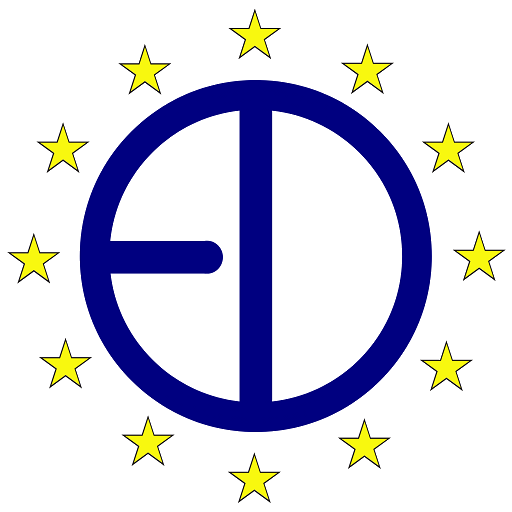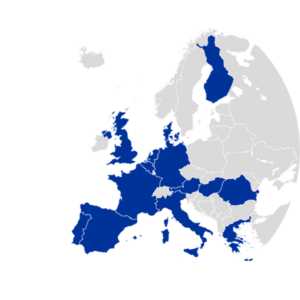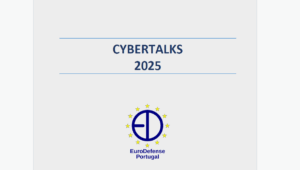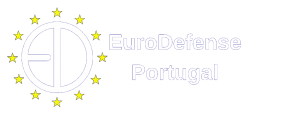In the summer of 1999, David Copeland, a British neo-Nazi, perpetrated a series of terrorist attacks in London. Dozens of people died and several others were ruthlessly injured. Known as the “nail bomber”, his story has been object of different biopics and was also recently documented by Netflix in the series “Nail Bomber: Manhunt” (2021). His main target? Minorities. Muslims. Gays. In a police interview, Copeland explained why he orchestrated the attacks and how he felt after being caught:
– “My aim was political. It was to cause a racial war in this country.”
– “How do feel about it, now? (…)”
– “I feel nothing. I don’t feel sadness or sorrow. I don’t feel joy about killing anyone. I just had to do it. It was my destiny.”
Twenty-three years after these devastating events, Copeland’s case gains a new momentum. Since 9/11, western governmental authorities and intelligence agencies have been concentrating their efforts in preventing jihadist terrorism, but now seem to be increasing their attention to the extreme-right. In 2020 UN member-states expressed concern to the UNSC Counter-terrorism Committee Executive Directorate (CTED) with the “growing and increasingly transnational threat of extreme right-wing terrorism”. It is globally on the rise, namely its ideology, propaganda and violence. The attack on the US Capitol, on the 6th January (2021), is perhaps one major game-changer: a thorough investigation by the Washington Post has confirmed that “Trump’s attacks have led to escalating threats of violence” from his supporters, such as the white supremacist group Proud Boys, although they were not the only rioters. In 2022, the “Worldwide Threat Assessment”, from the US Defense Intelligence Agency (DIA), highlights the growing threat from the designated “Racially or Ethnically Motivated Violent Extremisms” (RMVEs), and the “Annual Threat Assessment” of the U.S intelligence community (ODNI) reinforces this menace, stating they pose a threat “to the US and its allies”, while stressing the growing disruption of these groups in Europe.
In Europe, populism and extreme-right have also been fuelling strong divisions and governments are grappling with the threat. For example, focussing in the UK, in 2020 MI5 “took primacy” for right-wing terrorism (RWT) and, in 2021, the Director General Ken McCallum recognised that RTW is “the second variety of terrorism occupying MI5 attention” (after jihadist) as “we are progressively finding more indicators of potential threat”. This year, 2022, McCallum asked for more funds to tackle right-wing terrorism.
Are Western governments changing their counter-terrorism focus: from jihad to the extreme-right? In this text, we briefly address this question focussing especially on the EU context and highlight how the activities of the extreme-right are becoming a very serious threat to member-states. The analysis below follows three dimensions.
In this text we use the terms “far-right” and “extreme-right” interchangeably yet, following the work of Bjørgo and Ravndal (2019), these concepts are actually different: whereas the former is a broader category, which includes the “radical right” and the “extreme-right”, the latter concerns to the group of people that want democracy to be replaced and favour the use of violence against whatever enemies. Fundamentally, as the authors explain: “What distinguishes extremists from radicals, is that extremists reject democracy and promote violence or other illegal or non-democratic means as legitimate”. Moreover, using Europol’s terminology, “right-wing terrorism” refers to the use of terrorist violence driven by an extreme-right ideology, based on racism, supremacism and nationalism.
1. Terrorist attacks
The extreme-right is no stranger to the European authorities. Europol has been warning against their disruptive activities since 2006, and the last TE-SAT report (2022) states that several man, “influenced by accelerationist and apocalyptical Satanist ideas”, were arrested “for the planning or preparation of a terrorist attack”. According to our own personal PhD research (not published yet), based on Europol’s statistics, between 2006 and 2020 the EU sums a total of 35 completed, failed and frustrated (CFF) right-wing terrorist attacks. The UK is the most affected country by this type of terrorism, which sums a total of 9 CFF during this period, followed by France (8) and Hungary (4). During these fourteen years, right-wing terrorism has caused 16 victims, the second deadliest terrorism type after jihadism in the EU, which accounts for 404 victims.
Globally, according to the Global Terrorism Index (GTI) of 2022, it should be also noted that attacks from far-right groups in the West account for “30% of all fatalities” between 2007 and 2021, after jihadist terrorism (61%). Furthermore, some reports also estimate that the war on Ukraine could increase terrorist attacks in the West from the extreme-right, especially given the influx of asylum seekers over the last months. A recent report from the Institute for Economics & Peace (IEP) (2022), concerning the Ukraine and Russia Crisis, also states that the war has been “a magnet for many far-right extremists groups to gain experience in weapon training and fighting”.
2. Modus operandi and propaganda
There are three important aspects to highlight. First, according to the GTI (2022), it is important to note that “access to small arms” and the “acceptance of the rights of others” are two of the most statistically associated factors with terrorism in OECD countries. Far-right groups use a wide array of devices, including explosives, often homemade, firearms and knives. Weapons trainings, in particular, are still a major part of their activities, which are held in eastern European countries, Ukraine and Russia. Secondly, right-wing terrorist groups are very diverse but they are united by a set of violent narratives, centred in racism, nationalism, xenophobia and / or intolerance towards others, explains Europol. Thirdly, albeit the growing affiliations with far-right movements, lone actors (individuals who carry out attacks alone without direction of any wider terrorist group) remain key threats to the European internal security. These individuals are normally, but not exclusively, associated with the far-right violent extremism.
3. Radicalisation and recruitment
Online social networks and gaming platforms appear to be some of the preferred spots to recruit new members. The communication strategy of far-right groups has been targeting very young people, especially male, and often minors. Though, this is not exclusive of far-right groups. In 2021 “MI5 had found itself investigating a neo-Nazi terror suspect who was 13 years old” and in 2022 Germany arrested a teenager “for alleged extremist attack plans”, islamist-motived. Some far-right individuals suffer from psychological issues and have difficult in establishing real relationships.
David Copeland, the British neo-Nazi aforementioned, said to have been bullied in school and has “fantasized continually about taking violent revenge on his tormentors from age 12”. “Some observers have suggested that his obsession with domination and violence led him to develop an interest in fascism”, explains Colleen Sullivan in the SAGE Encyclopaedia of Terrorism (2011). Interestingly enough, Copeland’s psychological profile checks almost every requirement in the Al-Qaeda Training Manual. Actually, members of far-right and islamist groups have some similarities. In the documentary “Undercover Jihadi”, conducted by Mubin Shaikh, a former jihadi turned spy for the Canadian Secret Services (CSIS), Cornelia Lotthammer, from Violence Prevention Network (Germany), emphasises their similarly in “different levels”, including in disruptive family backgrounds. Both groups also stress the narrative of “joining to an historical mission”. Yet, “one is the Fourth Reich, and the other is building the Islamic State”, she explains.
Conclusion
So, are our counter-terrorism priorities changing? Jihadism is still perceived as the key terrorism threat to the European Union and it is likely to remain so over the next years. It seems quite premature to see any change in the 9/11 paradigm. However, there are multiple evidences of alarming activities from the extreme-right that could potentially lead to some changes in the panorama of counter-terrorism in the European soil and elsewhere, in the longer run. In fact, the UN CTED has identified the “increasing transnational aspects of right-wing extremism” as one of the major challenges for counter-terrorism in the future.
7 de dezembro de 2022
Joana Araújo Lopes é Doutoranda em “História, Estudos de Segurança e Defesa” no ISCTE. É bolseira da FCT e trabalha numa tese sobre o contraterrorismo em Portugal e Espanha, no contexto da União Europeia (2004-2020). É Mestre em Ciência Política e Relações Internacionais pela Universidade NOVA de Lisboa (2017). Trabalhou como estagiária na Embaixada Americana em Lisboa (Assuntos Consulares), no Ministério dos Negócios Estrangeiros (MNE) (Direção-Geral de Política Externa) e no Instituto da Defesa Nacional (IDN). Os seus principais interesses de investigação incidem sobre a segurança internacional, o terrorismo, o contraterrorismo, a radicalização, o extremismo violento e a diplomacia.
https://ciencia.iscte-iul.pt/authors/joana-araujo-lopes/cv
NOTA:
- O texto e as suas ideias são da inteira responsabilidade do seu autor, não vinculando a opinião do Centro de Estudos EuroDefense-Portugal.
- Os elementos de audiovisual são meramente ilustrativos, podendo não existir ligação direta com o texto.







